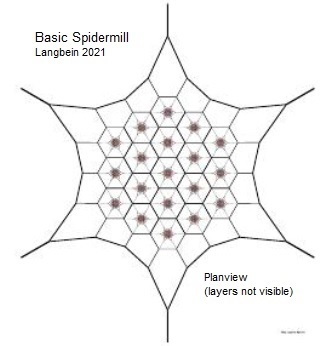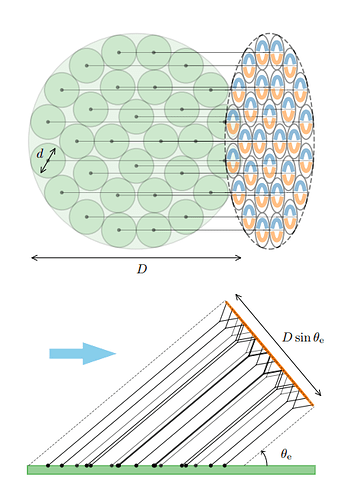From DaveS:
"Airborne Wind Energy pioneer, astronaut, and physicist, Dr. Wubbo Ockels, always believed in Networked Kites (qua Aircraft) to tap Upper Winds at multi-MW unit-plant scale, beginning with a ring topology he named “Laddermill”, leading to more complex star and mesh topologies he named “SpiderMill”, shortly before his untimely death in 2014. Ever since, US and EU AWE researchers continued developing Wubbo’s “Kite Network” concept space, now developed in detailed theory and subscale experiments, mostly in kPower and Jalbert Aerology Lab circles, but also at TUKaiserslautern and UTexas.
Now the University of Freiburg [De Shutter et al 2022] has made a nice analytic validation of Wubbo’s belief in superior Power Density (PD) of AWE “Multi-Aircraft Systems” compared to single-unit AWES topology and conventional wind turbines. They found almost an order of magnitude PD advantage over conventional wind turbines in the same land footprint, and even greater advantage over single unit AWES topology.
Freiburg’s “Multi-Aircraft” spatial schema-
The paper-
Vertical Airborne Wind Energy Farms with High Power Density per Ground Area based on Multi-Aircraft Systems
Jochem De Schutter, Jakob Harzer, Moritz Diehl
University of Freiburg 2022
Abstract—
This paper proposes and simulates vertical airborne wind energy (AWE) farms based on multi-aircraft systems with high power density (PD) per ground area. These farms consist of many independently ground located systems that are flying at the same inclination angle, but with different tether lengths, such that all aircraft fly in a large planar elliptical area that is vertical to the tethers. The individual systems are assigned non-overlapping flight cylinders depending on the wind direction. Detailed calculations that take into account Betz’ limit, assuming a cubically averaged wind power density of 7 m/s, give a potential yearly average PD of 43 MW/km2. A conventional wind farm with typical packing density would yield a PD of 2.4 MW/km2 in the same wind field. More refined simulations using optimal control result in a more modest PD of 6 MW/km2 for practically recommended flight trajectories. This PD can already be achieved with small-scale aircraft with a wing span of 5.5 m. The simulations additionally show that the achievable PD is more than an order of magnitude higher than for a single-aircraft AWE system with the same wing span. (Emphasis added)
Third Party Context: Related “Multi-Aircraft” AWES concepts, with analogous superior PD and scaling performance predicted. The difference being the SpiderMill version has a many-connected order for topological stability.
(4) (PDF) Advanced Kite Networks (researchgate.net)

"
